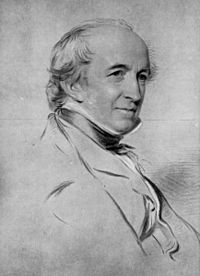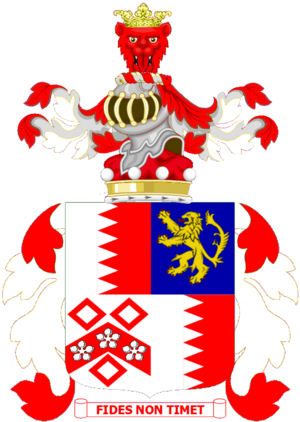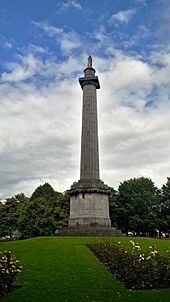Thomas Spring Rice, 1st Baron Monteagle of Brandon facts for kids
Quick facts for kids
The Lord Monteagle of Brandon
|
|
|---|---|
 |
|
| Chancellor of the Exchequer | |
| In office 18 April 1835 – 26 August 1839 |
|
| Monarch | William IV Victoria |
| Prime Minister | The Viscount Melbourne |
| Preceded by | Sir Robert Peel, Bt |
| Succeeded by | Francis Baring |
| Secretary of State for War and the Colonies | |
| In office 5 June 1834 – 14 November 1834 |
|
| Monarch | William IV |
| Prime Minister | The Viscount Melbourne |
| Preceded by | Edward Smith-Stanley |
| Succeeded by | The Duke of Wellington |
| Comptroller General of the Exchequer | |
| In office 18 April 1835 – 7 February 1866 |
|
| Monarch | William IV Victoria |
| Preceded by | Sir John Newport, Bt. |
| Succeeded by | Office abolished |
| Personal details | |
| Born | 8 February 1790 |
| Died | 7 February 1866 (aged 75) |
| Nationality | British |
| Political party | Whigs |
| Spouses | (1) Lady Theodosia Pery (died 1839) (2) Marianne Marshall |
| Alma mater | Trinity College, Cambridge |
Thomas Spring Rice, 1st Baron Monteagle of Brandon (born February 8, 1790, died February 7, 1866) was an important British politician. He was a member of the Whig party. He is best known for serving as the Chancellor of the Exchequer from 1835 to 1839. This role is like being the main money manager for the government.
Contents
Early Life and Education
Thomas Spring Rice was born into a well-known family in Ireland. His family owned large areas of land in a place called Munster. His father was Stephen Edward Rice, and his mother was Catherine Spring.
His family had a long history, including a famous judge named Sir Stephen Rice. Thomas went to Trinity College, Cambridge, a famous university. He also studied law, but he did not become a lawyer. His family had many connections in politics, which helped him start his own political career.
Starting His Political Journey
Thomas Spring Rice first tried to become a Member of Parliament (MP) for Limerick City in 1818, but he lost. However, he won the seat in 1820 and joined the House of Commons. This is where laws are made in the UK.
He was known for being a moderate reformer. This means he wanted to make changes to improve things, but not too quickly or radically. He was very good at understanding Irish issues and money matters. In 1824, he helped create the Ordnance Survey in Ireland, which maps the country.
Rising Through Government Roles
Because he was a good speaker, important Whig leaders noticed him. He became the Under-Secretary of State for the Home Department in 1827. In this role, he was in charge of Irish affairs. He strongly supported Catholic Emancipation, which meant giving Catholic people more rights.
From 1830 to 1834, he worked as a joint Secretary to the Treasury. After a big change in voting laws called the Reform Act 1832, he was elected to represent Cambridge in Parliament.
In June 1834, Thomas Spring Rice became the Secretary of State for War and the Colonies. This was a very important job, and he was part of the government's main decision-making group, called the cabinet. He kept this job when Lord Melbourne became Prime Minister. He was a strong supporter of keeping Ireland united with Great Britain.
Chancellor of the Exchequer
When the Whig party returned to power in 1835, Thomas Spring Rice was given the important job of Chancellor of the Exchequer. This meant he was in charge of the country's money.
It was a tough time for him in this role. There were problems like bad harvests, a struggling economy, and even a rebellion in North America. These issues caused big money problems for the government. He tried to make changes, but some of his plans did not work out well. He even tried to become the Speaker of the House of Commons again, but he wasn't chosen.
When he left this job in 1839, he was made a Baron Monteagle of Brandon. This meant he became a Lord and could sit in the House of Lords. He also served as the Comptroller General of the Exchequer from 1835 to 1865. After 1839, he mostly retired from public life, but he still spoke in the House of Lords about money matters and Ireland. He strongly disagreed with the government's actions during the terrible Irish famine in the 1840s.
Contributions Outside Parliament
Besides his political work, Thomas Spring Rice was involved in many other important areas.
- He was a trustee of the National Gallery, which is a famous art museum.
- He was a member of the governing body for the University of London.
- He was President of the Royal Statistical Society from 1845 to 1847.
- He was also a member of the Royal Society and the Geological Society, which are groups for important scientists.
He was well-liked in Limerick, Ireland, where he was seen as a kind landlord. He believed in protecting society from conflicts between different social classes. Even though he was a strong Anglican (a type of Christian), he supported Catholic rights, which made many Irish people, who were mostly Catholic, like him.
During the Great Famine in the 1840s, he tried to help his tenants. He spent so much money helping them that his family almost went bankrupt. Luckily, money from his second marriage helped him financially. There is even a monument in his honor in Limerick's People's Park.
However, some people have also suggested that he helped some of his tenants move to North America in 1838. This would have allowed him to use their land. But he also supported the idea of government-assisted emigration for everyone in the British Isles, so his actions might have been more complex.
Two places were named after him: Mount Monteagle in Antarctica and Monteagle County in New South Wales, Australia.
Family Life
Lord Monteagle of Brandon was married twice. His first wife was Lady Theodosia Pery, whom he married in 1811 when he was just 21. They had five sons and three daughters:
- Hon. Theodosia Alicia Ellen Frances Charlotte Spring Rice (died 1891)
- Hon. Mary Alicia Pery Spring Rice (died 1875), who worked for Queen Victoria.
- Hon. Catherine Anne Lucy Spring Rice (died 1853)
- Hon. Stephen Edmund Spring Rice (1814–1865)
- Hon. Charles William Thomas Spring Rice (1819–1870), who worked for the Foreign Affairs department.
- Hon. Edmund Henry Francis Louis Spring Rice (1821–1887)
- Hon. Aubrey Richard Spring Rice (1822–1897)
- Hon. William Cecil Spring Rice (1823–1880)
After his first wife passed away in 1839, he married Marianne Marshall in 1841. This marriage brought much-needed money to his family, helping him keep his estate in Ireland and his house in London.
When Lord Monteagle of Brandon died in February 1866, his grandson, Thomas Spring Rice, inherited his title. His great-granddaughter was the Irish nationalist, Mary Spring Rice. His second son, Charles William Thomas Rice, was the father of Sir Cecil Spring Rice, who was the British Ambassador to the United States.
 |
|


